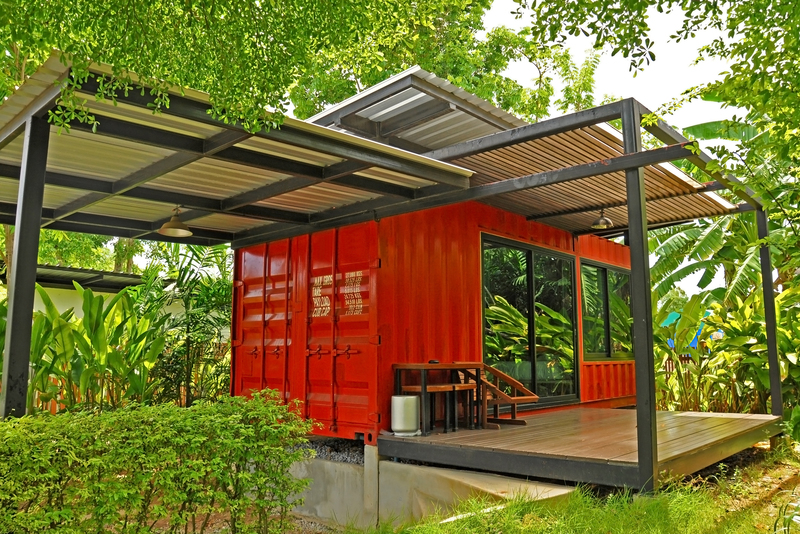Making Your Workspace More Eco-Friendly with Recycling
Eco-friendly workspaces are no longer a trend; they're an essential aspect of responsible business practices. With workplace sustainability at the forefront, more organizations and employees are seeking ways to create green, responsible environments. Recycling at work is one of the most accessible steps anyone can take to minimize environmental impact and build a healthier, more positive space for all.
Why Eco-Conscious Offices Matter
The modern office is a hub of activity, but it's also a significant source of waste and energy consumption. By making your workspace more eco-friendly--especially by integrating recycling solutions--you can help reduce landfill contributions, lower your carbon footprint, and contribute to a circular economy. Plus, adopting green practices boosts staff morale and enhances your company's brand reputation in an increasingly eco-aware society.
Environmental and Business Benefits
- Reduction in Waste: Implementing office recycling means less trash ends up in landfills.
- Cost Savings: Efficient recycling and resource use can reduce operational costs.
- Employee Engagement: Green initiatives foster a culture of responsibility.
- Brand Value Enhancement: Sustainability appeals to eco-conscious clients and partners.

Getting Started: Assess Your Current Workspace
An effective eco-friendly office recycling strategy starts with assessing your existing setup. Evaluate what types of waste your office generates, and how they are currently managed. Common office waste streams include:
- Papers and documents
- Cardboard packaging
- Plastic bottles and containers
- Electronics and batteries
- Printer cartridges
- Food waste
Next, research local recycling guidelines to clarify what materials you can recycle in your area. Each municipality or region has unique requirements, so it's important to be informed if you want your workplace recycling program to be effective.
Steps to Create an Eco-Friendly Office with Recycling
Transforming your office into a sustainable workspace takes planning and commitment. Here's a practical, step-by-step approach to get you started:
1. Set Clear Sustainability Goals
Before implementing recycling bins and policies, define measurable goals. Examples include reducing general waste by 30% within a year, increasing recycling participation to 90%, or achieving zero-waste events. Having clear objectives will guide your process and provide benchmarks to celebrate progress.
2. Educate and Involve Your Team
Staff involvement is crucial for success. Host workshops, share tips on eco-friendly habits at work, and explain the impact of recycling efforts. Use newsletters, posters, and meetings to communicate updates. Consider appointing a green ambassador--an employee who leads and motivates others in green initiatives.
- Host "Eco-Lunch & Learns" on recycling topics
- Share monthly sustainability metrics
- Celebrate milestones and recognize eco-champions
3. Provide Convenient Recycling Stations
The key to effective office recycling is easy access. Place clearly labeled recycling bins in kitchens, break rooms, meeting areas, and near printers. Use color-coded bins and educational signage to minimize contamination. For example:
- Blue: Paper and cardboard
- Green: Bottles and cans
- Red: Non-recyclable waste
- Special bins: Electronics, batteries, coffee pods, etc.
Make sure to audit bins periodically and adjust their placement based on actual user behavior.
4. Go Digital to Reduce Paper Waste
Digitization is one of the most significant moves toward a green office. Adopt paperless workflows wherever possible. Use cloud storage for document management, encourage electronic signatures, and replace printed memos with digital updates. When printing cannot be avoided, use both sides of the paper and set printers to default double-sided mode.
- Use tools like Slack or Microsoft Teams for communication
- Utilize project management software for collaboration
- Scan and store receipts, invoices, and contracts digitally
5. Recycle Electronics Responsibly
Electronic waste (e-waste) can be hazardous if not managed correctly. Develop an e-waste recycling program to collect and responsibly dispose of old computers, monitors, phones, and batteries. Partner with certified e-waste recyclers in your area. For functional but unwanted devices, consider donating to non-profits or schools.
6. Reduce Single-Use Items
Single-use plastics and other disposables are major contributors to office waste. Encourage the use of reusable coffee cups, water bottles, and lunch containers. Stock kitchens with ceramic mugs, plates, and metal cutlery instead of disposables. If single-use items are necessary, choose compostable or recyclable alternatives that break down more easily.
7. Compost Office Food Waste
Set up a compost bin in the break room or kitchen. Coffee grounds, fruit peels, and lunch scraps can be composted to reduce landfill-bound waste and create nutrient-rich soil for office plants. Work with local composting services or encourage a staff-led garden project on-site.
8. Procure Eco-Friendly Office Supplies
Apply the principles of sustainable purchasing by selecting recycled or eco-certified office supplies. Choose FSC-certified paper, refillable pens, recycled folders, and green cleaning products. Work with vendors who share your commitment to environmental responsibility.
- Buy in bulk to reduce packaging waste
- Choose local suppliers to cut transport emissions
- Opt for energy-efficient appliances and LED lighting
9. Track Progress and Celebrate Success
Monitor your office recycling program's effectiveness by recording waste diversion rates, total recyclables collected, and reductions in paper usage. Share these achievements with your team--recognition and celebration are vital for ongoing engagement.
Overcoming Common Recycling Challenges at Work
Adopting an eco-conscious office environment can present hurdles, but they're all manageable with the right approach. Here are typical challenges--and solutions--that offices often encounter:
Lack of Awareness
Many employees might not know what items are recyclable at work. Regular education and simple, bold signage make it easier for staff to sort waste correctly.
Contamination
Non-recyclable materials in recycling bins can cause entire batches to be rejected. Make instructions clear, assign recycling champions to monitor bins, and remind staff frequently about best practices.
Inconsistent Participation
Involve all departments and management levels in sustainability initiatives. Create friendly competitions--such as "Which department recycles the most this month?"--to boost interest and commitment.
Space Limitations
If your workspace is tight, opt for compact, stackable bins and digital forms to minimize the need for bulky storage. Even small offices can excel at recycling with clever planning.
Going Beyond Recycling: Other Ways to Green Your Workspace
While recycling at the office is a significant step toward sustainability, consider combining it with other green strategies for maximum impact.
Energy Efficiency
- Switch to LEDs and motion sensors for lighting
- Encourage natural light and reduce reliance on artificial lighting
- Unplug chargers and equipment when not in use
- Use programmable thermostats
Encourage Sustainable Transportation
- Promote carpooling, biking, or public transit
- Provide secure bike racks and showers if possible
- Offer incentives for employees who use green transport
Indoor Air Quality
- Add plants that naturally purify the air
- Limit the use of harsh cleaning chemicals
- Open windows for ventilation when weather allows

Promoting a Green Culture Company-Wide
Sustainability is a collective effort. To maintain momentum and ensure long-lasting change when making your workspace more eco-friendly with recycling, leadership must set the tone. Here's how:
- Lead by Example: Decision-makers should actively participate in recycling and sustainability programs.
- Embed Sustainability in Policies: Make recycling part of orientation, procurement, and company-wide communications.
- Reward Participation: Offer incentives like gift cards, extra time off, or team outings for progress toward recycling goals.
- Sustain Continuous Improvement: Regularly update your programs, introduce new eco-initiatives, and stay engaged with the newest trends and regulations.
Conclusion: A Greener Workspace Starts with You
Making your workspace more eco-friendly with recycling is both a responsibility and an opportunity. By integrating practical recycling solutions and fostering a culture of environmental stewardship, any office--large or small--can make a real difference. The shift to sustainability not only benefits the planet but also enhances wellbeing, productivity, and your organization's public perception.
Begin by assessing your current office environment, engaging your team, and setting achievable goals. From there, every new recycling bin, energy-saving habit, or green procurement decision moves your company closer to a brighter, more sustainable future. Remember, the journey to a greener workspace starts one action at a time--make yours count!
Ready to make your office space more sustainable? Start your recycling program today and inspire others to join the movement for a healthier planet!
```